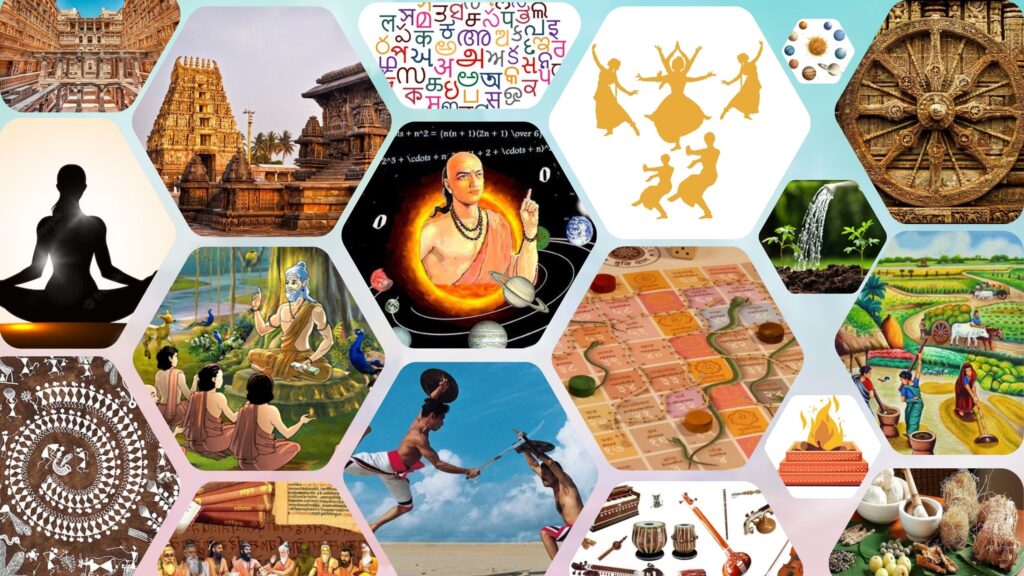Introduction
The human brain has long fascinated thinkers—from ancient Indian sages to modern neuroscientists. Today, a convergence is occurring between contemporary brain science and traditional Indian knowledge systems like Ayurveda and Sankhya, particularly in how they explain cognition, perception, memory, and creativity.
As designers, educators, and researchers, understanding the multi-layered nature of the human mind is critical to creating spaces, systems, and tools that resonate with the body, psyche, and spirit. This article explores how emerging insights from neuroscience align with and expand upon ancient Indian views of the mind—and what this means for the future of design education and cognitive wellbeing.
1. The Brain in Neuroscience: A Biological Masterpiece
Contemporary neuroscience describes the brain as:
- A 100-billion neuron network conducting 100 trillion synapses.
- The hub of memory, emotion, decision-making, and imagination.
- A plastic organ—capable of rewiring itself through experience (neuroplasticity).
- An electrochemical engine powered by neurotransmitters like dopamine, serotonin, acetylcholine, and GABA.
Recent breakthroughs (2024–25):
- Whole-brain connectomics maps the neural pathways of thought in 3D.
- AI-neuro hybrid models can now simulate cognitive load and ideation patterns.
- Studies show how creativity and empathy activate default mode and mirror neuron networks.
2. Manas, Buddhi, Chitta, and Ahamkara: The Indian Model of Mind
Indian Knowledge Systems provide a subtle, layered framework for understanding consciousness:
- Manas (Mind): The sensorium—receiving data from Indriyas (senses).
- Buddhi (Intellect): Decision-making and discrimination (viveka).
- Chitta (Memory): The subconscious storehouse of impressions (samskaras).
- Ahamkara (Ego-Idea): The sense of “I”, responsible for identification and attachment.
This quadripartite model maps beautifully onto neuroscience’s discussions of:
- Executive function (Buddhi = prefrontal cortex).
- Sensory integration (Manas = thalamus, sensory cortices).
- Implicit memory and affect (Chitta = limbic system, hippocampus).
- Self-awareness and self-representation (Ahamkara = default mode network).
3. Ayurveda and the Gunas: Neurological States of Being
Ayurveda explains mental states through the Trigunas—Sattva, Rajas, and Tamas:
- Sattva – Clarity, calmness, balance; associated with optimal cognitive performance and flow state.
- Rajas – Activity, restlessness; linked to overthinking, anxiety, and attention switching.
- Tamas – Inertia, dullness; connected to lethargy, depression, and low cognitive arousal.
This classification prefigures arousal theories in neuroscience (e.g., Yerkes-Dodson Law) and offers a profound tool to regulate cognition through diet, lifestyle, and design.
4. Design Implications: Cognitive-Ayurvedic Integration
In your field—design education and spatial thinking—this synthesis has powerful implications:
● Cognitive Ergonomics and Sattva-Based Design
Designing environments that reduce Rajas and Tamas:
- Natural lighting and rhythm.
- Use of earthy, non-synthetic materials.
- Proportional architecture based on Vastu and body-mind alignment.
● Learning Tools Aligned with Buddhi & Chitta
- Gamified offline tools that foster narrative flow and long-term memory (Chitta).
- Decision-based simulations activating Buddhi and moral reasoning.
● Sensory Design and Manas Optimization
- Avoiding cognitive overload through layered sensory cues.
- Use of pratyahara-inspired minimalism to balance external input.
5. What Neuroscience Can Learn from Ayurveda—and Vice Versa
- Ayurveda’s concept of Ojas (mental resilience) could inform mental immunity studies.
- Neuroplasticity validates yogic practices (asanas, pranayama) as cognition enhancers.
- The emerging field of Neuroaesthetics aligns with Rasa theory—understanding emotional impact of form and narrative.
Conclusion
In the 21st century, we don’t have to choose between ancient wisdom and modern science. We need both. The brain is not just a computational organ—it is a seat of awareness, memory, and experience, shaped by evolution and culture. When neuroscience meets Ayurveda through the lens of design, a new pedagogy of the mind becomes possible—one that is cognitively grounded, spiritually enriched, and sensorially humane.
For educators, architects, and creators working in Indian contexts—or inspired by Indian philosophy—this intersection is not a trend. It is a return to a deeper model of integrated intelligence.
References
Sankhya Karika – Classical Text on Indian Psychology and Mind Theory.
V.S. Ramachandran (2023). The Tell-Tale Brain: Unlocking the Mystery of Human Consciousness.
R.K. Sharma & B. Dash (1985). Charaka Samhita: Chikitsa Sthana.
Daniel Goleman & Richard Davidson (2017). Altered Traits: Science Reveals How Meditation Changes Your Mind, Brain, and Body.
Dr. B.N. Gangadhar (2021). Neuroscience and Ayurveda: Bridging Ancient and Modern Mind-Body Models. AIIMS & NIMHANS collaboration.
J. Lehrer (2018). Neuroaesthetics and the Architecture of the Brain.


